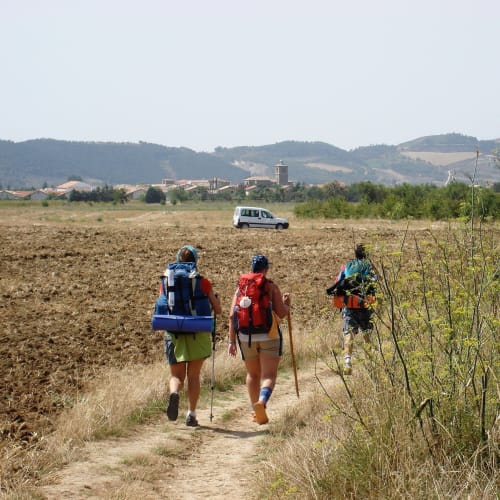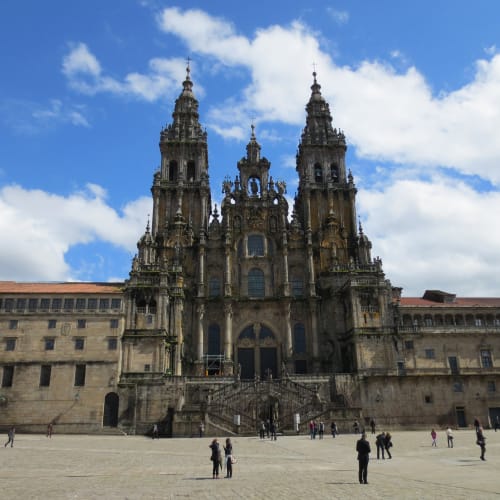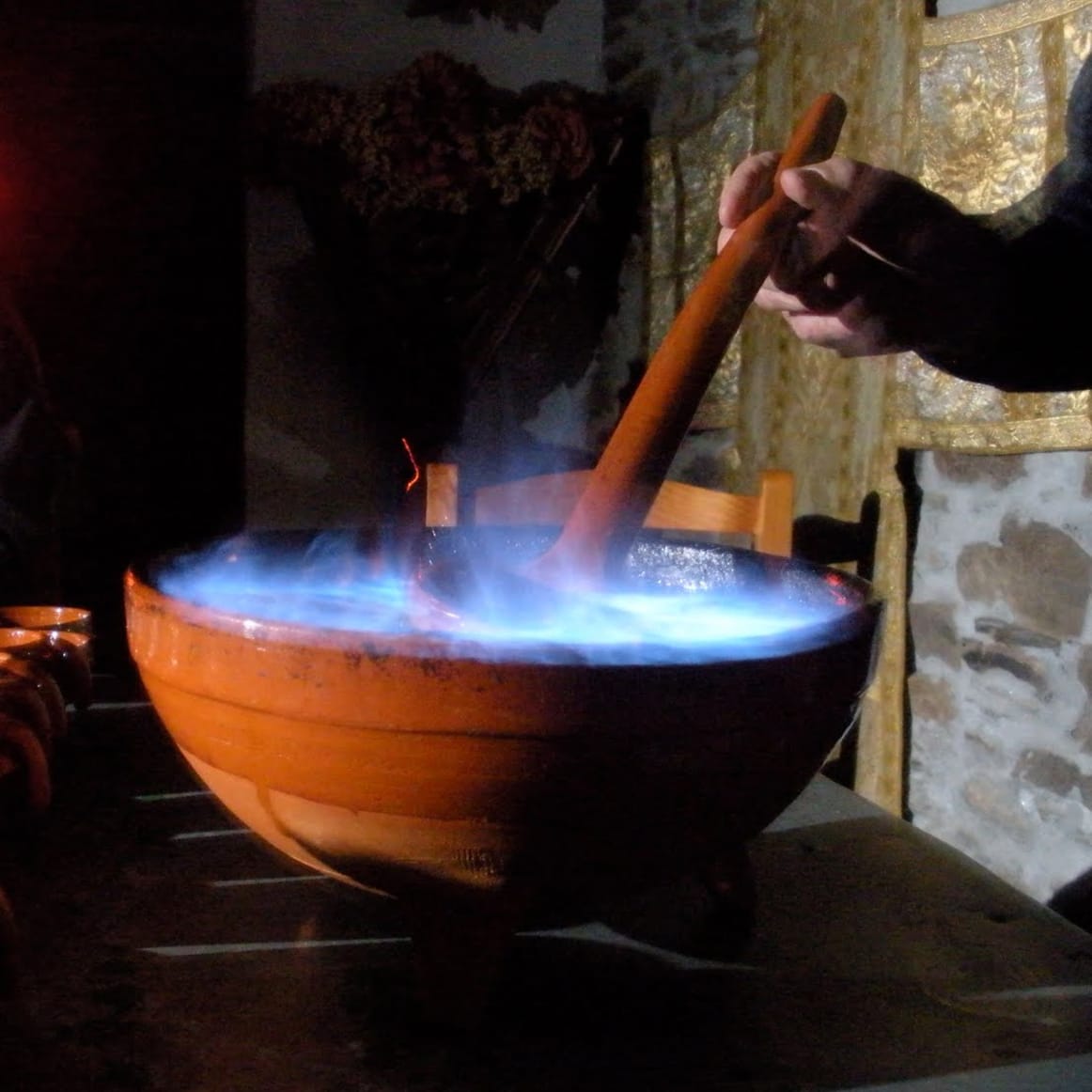Escaping Modern Stress on the Santiago Camino
Jonathan Harris | July 2017




Text message, email alert, newsfeed, Facebook update, Instagram post ... enough! How can we get away from hectic daily life and find some peace? Spain has a 1,000-year old solution that is more popular than ever. It is called the Camino de Santiago.
Every year hundreds of thousands of pilgrims walk and cycle the ancient road to Santiago de Compostela. They travel through tiny stone villages and over mountain ranges, through bustling cities and across vast rolling fields where they may only encounter a few other humans in a day of walking. Most modern pilgrims are not specifically on a religious journey. But they share many of the same motivations as the men and women who walked the Way centuries ago.

Santiago de Compostela was a major Christian pilgrimage site in the Middle Ages, the resting place of Santiago, the patron saint of Spain. In its heyday, it rivaled Rome and Jerusalem as a pilgrimage center. The Roman Catholic Church decreed that if you walked all the way to the holy city of Santiago, or died along the way, all your sins would be forgiven.
Alongside the purely pious individuals making the trek were other pilgrims with a variety of motivations. There were some who wanted to be healed from an illness, others who were looking for adventure. Some troublemakers were sentenced by their fellow townspeople to walk to Santiago to pay for some petty crime – probably in the hope that they would never return!
These ancient pilgrims were seeking escape and a source of meaning, a respite from the troubles of daily life and a path towards a better place. I think we can all identify with these motivations. Whether petty or profound, the burdens that weigh a pilgrim down can be eased, step by step, as they walk on the ancient stones of the pilgrimage route. The goal is to feel lighter, with a clearer vision of their place in the world, and a new appreciation of the people around them.
I have walked the Camino twice, once in college and once on my honeymoon. Both times I was struck by the change of pace the pilgrimage imposes on the mind. Walking 8 or 10 miles a day forces you to notice all the small details of the countryside, the flowers, the stones, the small sounds that are usually drowned out by machines. It also recalibrates your sense of place and distance. The little village on the other side of the mountain is not a fifteen-minute drive at 120 kilometers per hour on a 21st century highway. On foot, it is a difficult 9 hour walk up steep paths and over small streams, with several breaks to rest and note how far you have come. Upon arriving, the landscape is noticeably different, and there is a much stronger sense of “here” and “there.”
The world expands when traveled by foot. Looking at a map, it is astonishing that people who live a few miles over the Galician border speak a different language - until you walk over the steep, imposing mountains to get there! These very mountains were also home to thieves and bandits in the Middle Ages, and I could easily spot some wonderful ambush opportunities as I trudged up steep paths and through heavily forested passes. No wonder the two areas were so culturally different.
At the end of the day we would spend the night in an ‘albergue,’ or pilgrim hostel, usually hosted by volunteers. These simple dwellings were usually large rooms with dozens of bunk beds, though one time we slept in a tent by a flowing river. Here the personal spiritual journey transitioned into a communal gathering of travelers from all over the world. If the Camino de Santiago is all about leaving the treadmill of our personal daily lives, sharing time with a fishing captain from Brazil or a Dutch land-use negotiator certainly opens up new perspectives.

One night at a hostel in Villafranca del Bierzo stands out for me. The albuergue was situated in a beautiful old stone building. It was a very basic setup, with rooms full of bunks and simple showers with hot water provided by a solar heater. After sharing a meal and discussing the day’s journey with a dozen other pilgrims, the host brought out a ceramic cauldron into which he poured a bottle of aguardiente liquor. He added coffee beans, lemon peels and herbs, then lit the brew on fire. He called it a ‘quemada.’ He recited a Galician spell to ward off bad spirits, and then poured the warm brew into cups for all of us to share. We sipped and talked into the night, sharing stories from the road and from home. It was an experience distinctly different from normal daily life, a chance to shed our personal concerns and commune with our new friends.
As we approached the magical city of Santiago de Compostela, we felt a bittersweet mix of accomplishment and sadness that the journey had come to an end. Some of us lingered in the old city, celebrating together with tables brimming with the delicious local seafood. Others continued walking for a few days to reach Finisterre, the “end of the world.” In medieval times, this stone outcropping that reaches into the Atlantic Ocean was thought to be the furthest west you could travel, with only the sea beyond. What a fitting end to a journey.
At times life can seem overwhelming, a never-ending procession of responsibilities and problems. While we experience this in our own modern way, I am sure pilgrims of the 13th century shared similar feelings. It is wonderful that the Camino endures to this day, over 1,000 years since the first pilgrims visited the shrine of Santiago. Walking the same path as millions of pilgrims before you is a moving experience. While each pilgrim has individual motivations, whether religious, spiritual or athletic, in the end this ancient path helps you transcend your personal situation, connect with a community of travelers and realize that we are all on a journey together.
Abrazos,
Jonathan Harris

